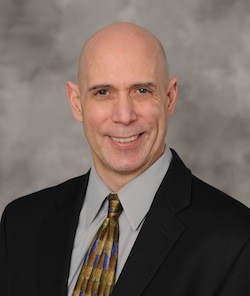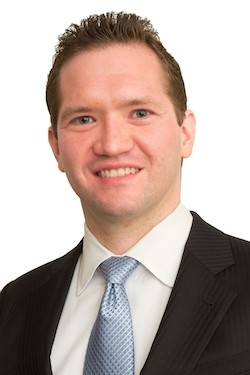
Options-market operators constantly battle one another for market share, and the competition is often tooth-and-nail. A kinder, gentler way to add business is by ‘growing the pie’ for all, an approach that typically deploys education as its linchpin.
The idea is that options are not as straightforward as equities, so beginners need to know the basics, and existing users can derive value from learning about more advanced strategies. The net result will be more options traded, which is a winning proposition for market operators, trade handlers, technology providers, and hopefully, end users.
Options education is offered by the Options Industry Council, as well as exchanges, trading-platform providers, and well-known individuals such as Dan Passarelli and Jon Najarian. Mediums range from old-fashioned classrooms, to television programs, to online webinars. The target audience can be broadly categorized into three tracks: retail, or semi-professional traders; wealth advisers; and institutional market participants.

Alan Grigoletto, OIC
Retail traders and wealth advisers are important for the options market for their liquidity and diversity of trading strategies, but they can carry the market only so far. The real holy grail for the options industry is in the form of pension plans and other institutional asset owners that oversee tens or even hundreds of billions of dollars, as even a small allocation of a portfolio opened up to options strategies can move the needle.
“Getting new options adopters is often a slow process, but I will tell you that where we met closed doors in the past we are now receiving invitations to present and speak,” said Alan Grigoletto, vice president of education for the Options Industry Council.
According to Bats Global Markets Vice President of Market Development Jeromee Johnson, the institutional sector has been “recognized as one of the great sources of potential for the options industry for a number of years. We haven’t managed to get the floodgates to open up, rather it continues to come in dribs and drabs. Making a concerted effort to help get those guys over the goal line is important.”
Boards Targeted
With some pension plans, the investment personnel may be inclined to use options in some portfolios, but they are restricted from doing so by the charter that is set by the pension board. To that end, the Chicago-based OIC is seeking to establish dialogues with the boards.
Earlier this year, the OIC presented to the Pennsylvania School Education Retirement System in the industry group’s first-ever educational presentation to a pension board. Grigoletto said several other pension plans have expressed interest in OIC education material and studies, and the trade group recently joined the National Association of State Retirement Administrators as an associate member, for the purpose of building relationships that can open doors for future presentations to pension administrators.
Recent equity-market gains can be locked in using protective puts or other options strategies, potentially appealing to managers who are concerned that the market is headed for a fall.
“When you have a market that returns 30% as it did last year — which is basically almost four years’ of expected return in a single year — naturally an institution would want to protect those gains,” Grigoletto told Markets Media. “One way to protect those gains is with a non-correlated options strategy.”
“Another thing I will tell you is that advisory use of options is growing,” Grigoletto said. “We see it both in-house, meaning they’re doing it themselves, and also by employing a sub-advisor who runs an options-based strategy. There are many contributing factors — the search for yield, the advent of new options products, options-based strategies within ETFs, and the clients of advisors themselves, who often drive the discussion of options.”
Among market operators, possibly the biggest purveyor of options education is CBOE Holdings, the largest U.S. options-exchange operator by overall market volume through its Chicago Board Options Exchange and the more recently launched all-electronic C2 exchange.
Chicago-based CBOE’s Options Institute provides instruction in two classrooms seating about 150 total. The space was newly built out in the fall of 2013, and the company also offers webcasts and online courses, many of which are on-demand 24/7.
CBOE’s wheelhouse is in index options tied to the Standard & Poor’s 500 Index CBOE Volatility Index (VIX). The knowledge base needed to successfully trade options on those indexes are more specialized as compared with single-stock options.
“CBOE’s two largest products, SPX and VIX, are very much suited for and designed to support a more institutional type of user, so we spend a lot of time educating the institutional community,” said Ed Provost, CBOE’s president and chief operating officer.
Provost gauges the state of options education at CBOE’s biannual Risk Management Conference, the U.S. version of which was held in Florida in March. “We get good insight from institutional users, pension consultants and those who support the institutional community on what’s going on in their shops as it relates to using options products,” Provost said. “What are their obstacles, their successes, what are they interested in, what strategies are they using?”
Questions from RMC attendees “mostly center around our volatility products,” Provost said. “If someone is already engaged in the use of options, then it becomes an issue about specific VIX products, how they are using them, or ideas for products they might like to see.”
The March conference drew more than 300 attendees, many of them from the buy side including pension plans, according to Provost. “There is tremendous interest by the institutional community, in particular the pension space, to understand options in general and our volatility products specifically,” he said. “In options, the institutional community — specifically pensions — is where the greatest untapped potential exists, because there are still plans that are not utilizing options.”
Underutilized

Steve Crutchfield, ICE
Steve Crutchfield, executive vice president and head of U.S. options at IntercontinentalExchange, agreed that options haven’t come close to realizing their potential. “Options as an asset class are generally underutilized by a significant chunk of the investing population, who could derive substantial benefit by adding options to their portfolio,” he said. “Nobody questions the value of having insurance on your car or on your house, but the value added by an overlay of covered calls or protected puts to a portfolio is something that hasn’t quite clicked with a lot of investors, including sophisticated institutional investors.”
Education is one area where options-market operators can put aside the day-to-day competitive donnybrook and instead collaborate for the benefit of the industry. “That’s what allows us to win that new business and try to dispel some of the myths about options as a scary derivative, exotic thing,” Crutchfield said. “Rather, it’s something that should be a valuable part of the tool kit for a good chunk of the investing public.”
As many pensions and other institutional investors increase their allocations to alternative investments, hedge funds play an increasing, if under-the-radar, role in options education. As Victor Securities Chief Executive Kevin Bakhler explained, ‘options-centric’ hedge funds aren’t easily categorized by institutional investors or their consultants, so they need to explain themselves.
“Nobody questions the value of having insurance on your car or on your house, but the value added by an overlay of covered calls or protected puts to a portfolio is something that hasn’t quite clicked with a lot of investors.”-Steve Crutchfield, ICE
“It’s up to the professionals of the hedge fund to get their point across regarding what is the risk profile of their specific hedge fund,” Bakhler said. “There is the need for the sales professionals of these funds, to really do a good job communicating with their investors and say ‘Look, we are here to protect you in a down market. Just because it’s been going straight up for the last five years, we’re actually doing exactly what we’re supposed to do, even though there may be a small drag on performance’.”
Added Bakhler, “there is a challenge for a hedge fund to explain exactly what it does and how it fits into the institutional investor’s overall portfolio.”
Aside from trying to make the rounds of U.S. institutional asset owners, the OIC is also working in Europe, whose market participants generate almost 10% of U.S. options trading volume. Grigoletto said Gary Delany, director of European marketing and education for the OIC, attends U.K. pension conferences with the goal of bringing options into more conversations.
In Poland, the Warsaw Stock Exchange recently said it will introduce single-stock options later this year, adding to its current offering of index options. “This is terrific news,” Grigoletto said. “We continue to support their educational efforts at the institutional and retail levels.”
“There is a challenge for a hedge fund to explain exactly what it does and how it fits into the institutional investor’s overall portfolio.”
“OIC is also encouraged that exchange-listed options will soon be traded in China,” Grigoletto continued. “OIC has sent delegations to China over the past years to help them get a leg up on options education. In Chicago, OCC, OIC as well as the exchanges continue to see delegations coming from China to learn more about our markets. At the moment, Chinese investors are subject to trading restrictions in foreign markets, but our sincere hope is that cross-border, trading opportunities will open up in the near future.”
Overall, “we’re sticking to the plan that we put in place in September, which was to put more emphasis on institutional investors and continue to press hard on the wealth-advisor segment, whether in Canada, the U.S., or Europe,” Grigoletto concluded. “We have a terrific product, with central clearing, deep liquidity and a great story to tell.”

